Abstract
In this study two groups of patients with acute Chagas' disease were identified. Group one consisted of five patients with apparent acute Chagas' disease. These patients showed symptoms and signals of an acute illness, such as high fever and enlarged spleen. One of these patients developed severe myocarditis and heart failure. Group two consisted of seven patients with inapparent acute Chagas' disease. This was a nonclinical entity, not perceived by the patient who did not seek medical care. The diagnosis was made by the shift of a serologic test which indicates the presence of immunoglobulin M antibodies to Trypanosoma cruzi.
The patients with apparent acute Chagas' disease showed positive delayed-type skin response to T. cruzi antigen. Also, their leukocytes showed significant inhibition of migration in the presence of this antigen. By contrast, the patients with the inapparent acute Chagas' disease did not show positive delayed-type skin response to T. cruzi antigen and no significant inhibition was observed when their cells migrated in the presence of this antigen. Of interest, none of these patients was capable of developing contact sensitivity to 2,4-dinitrochlorobenzene. However, three out of five patients with the apparent acute disease and all the normal control subjects showed positive contact reaction after sensitization to this drug.
The results of these experiments would suggest that the thymus-derived (T)-lymphocyte function is depressed in patients with the clinically inapparent acute Chagas' disease. This immunodepression seems to be acquired in the course of the T. cruzi infection because all patients showed positive delayed-type skin response to at least one ubiquitous microbial extract, thus indicating previously normal T-cell function. We hypothesize that T. cruzi antigens may directly stimulate T cells with the concomitant release of factors that might become supressive for T-cell responses. Furthermore, the suppressive effect might interfere with the T-cell response to other antigens, such as to 2,4-dinitrochlorobenzene.
Full text
PDF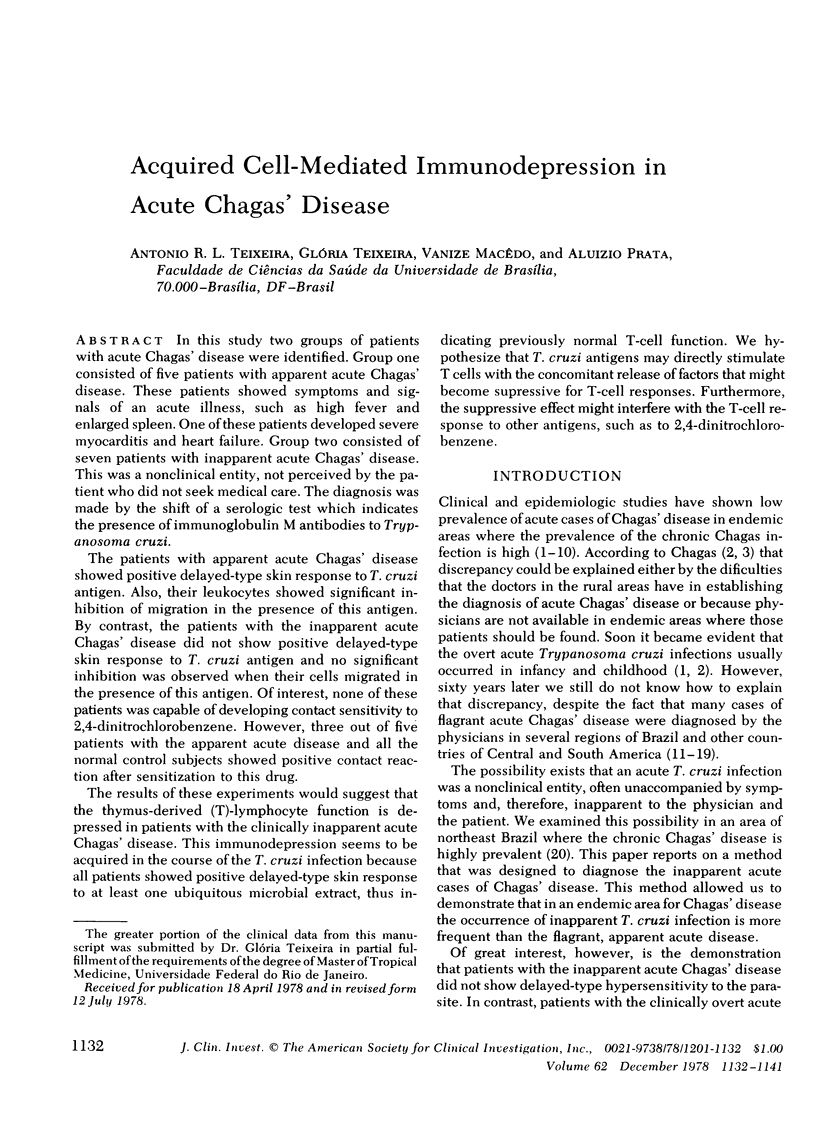

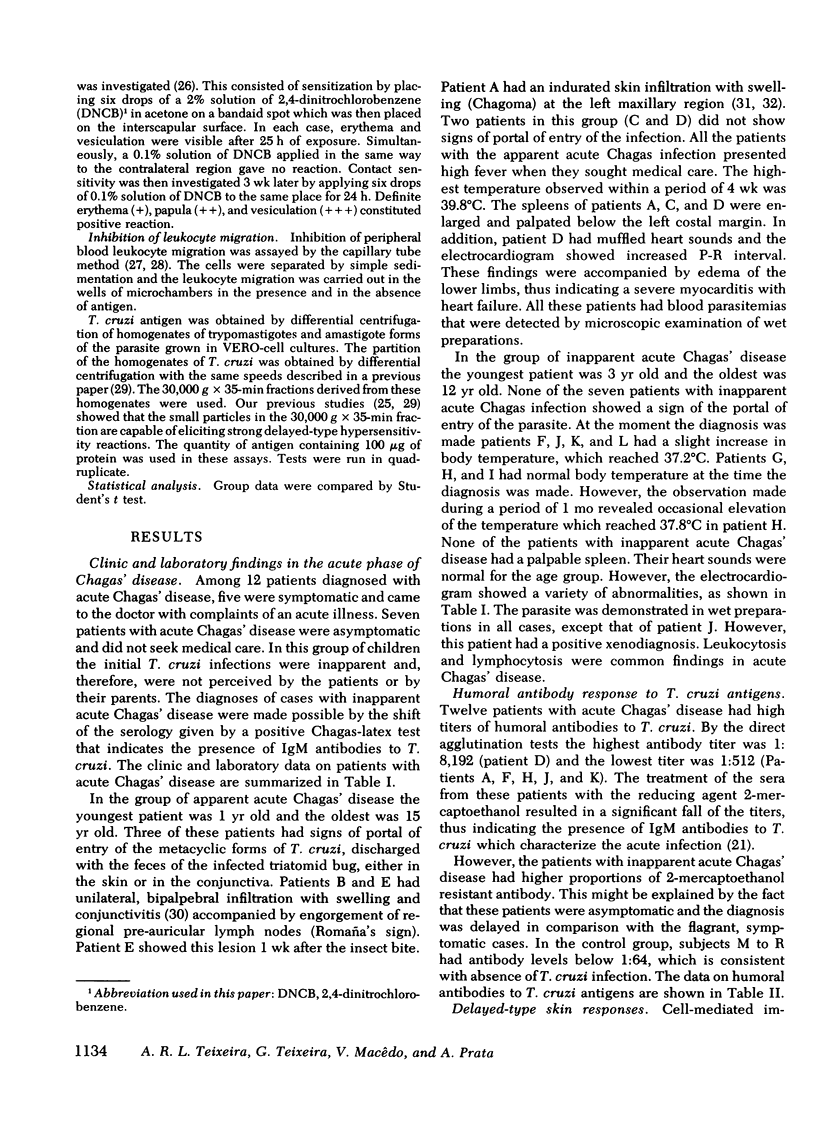
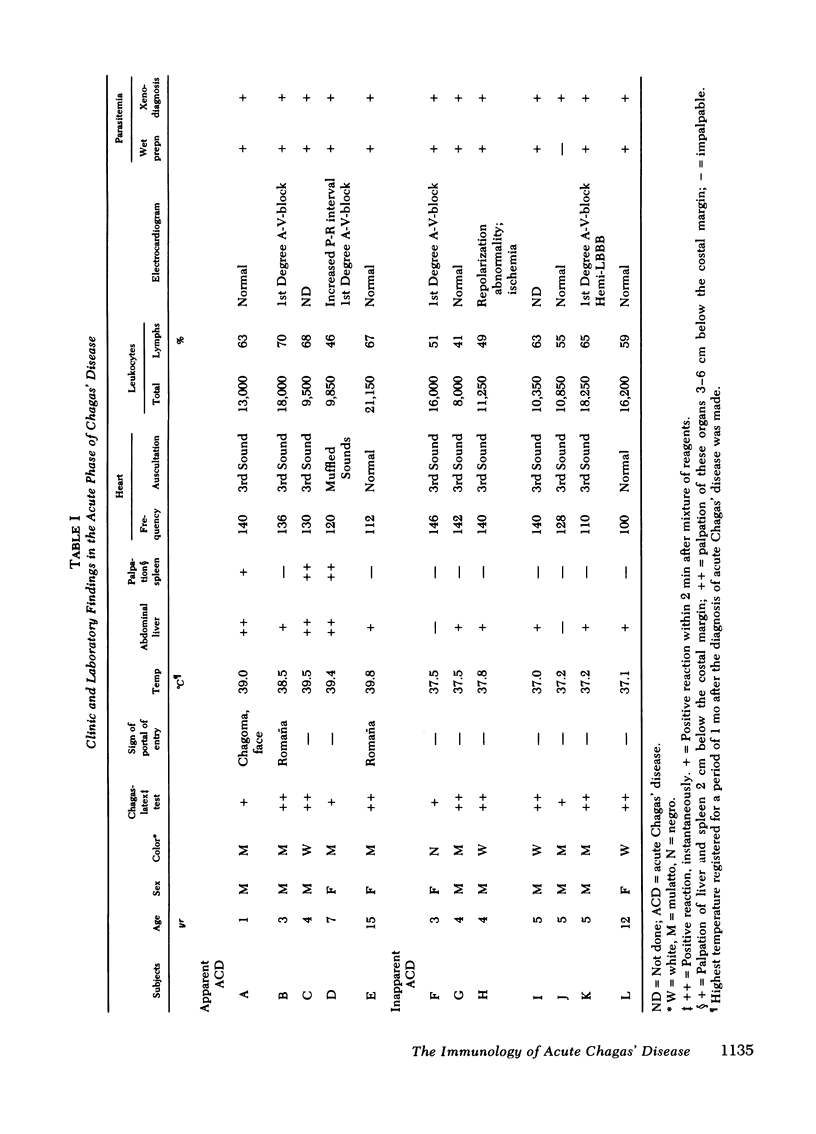
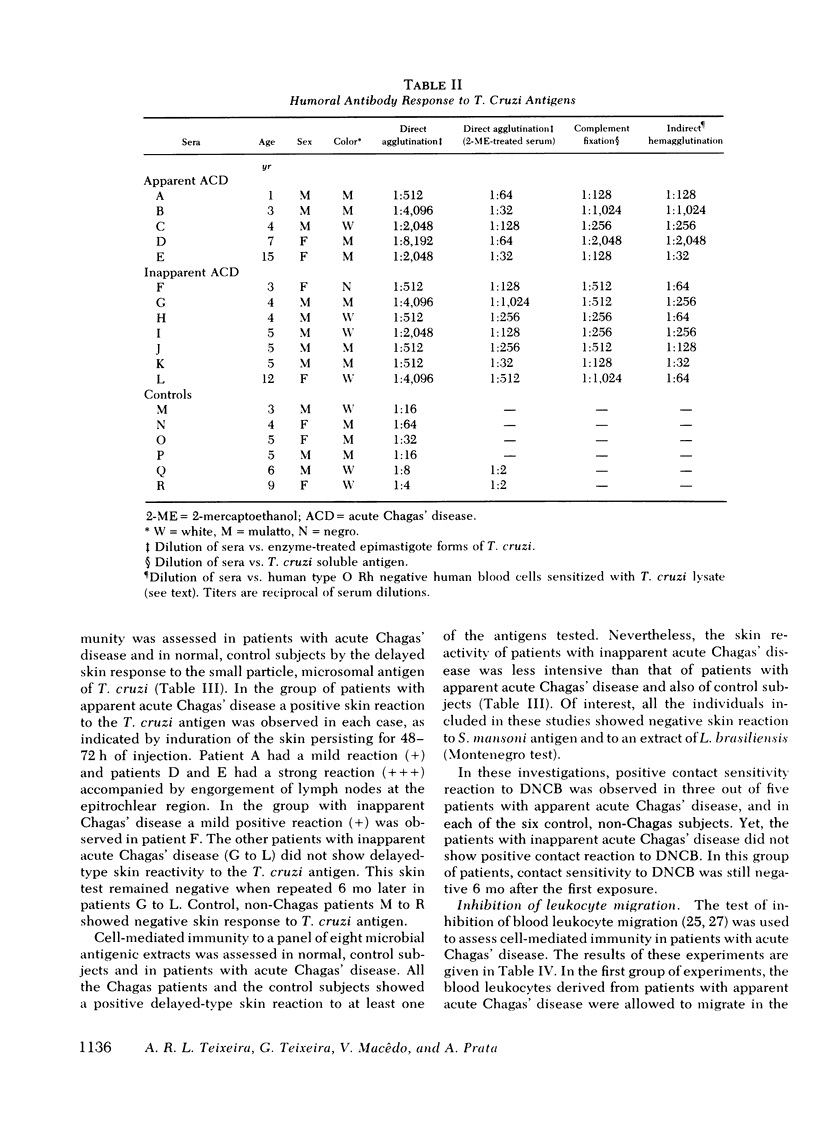
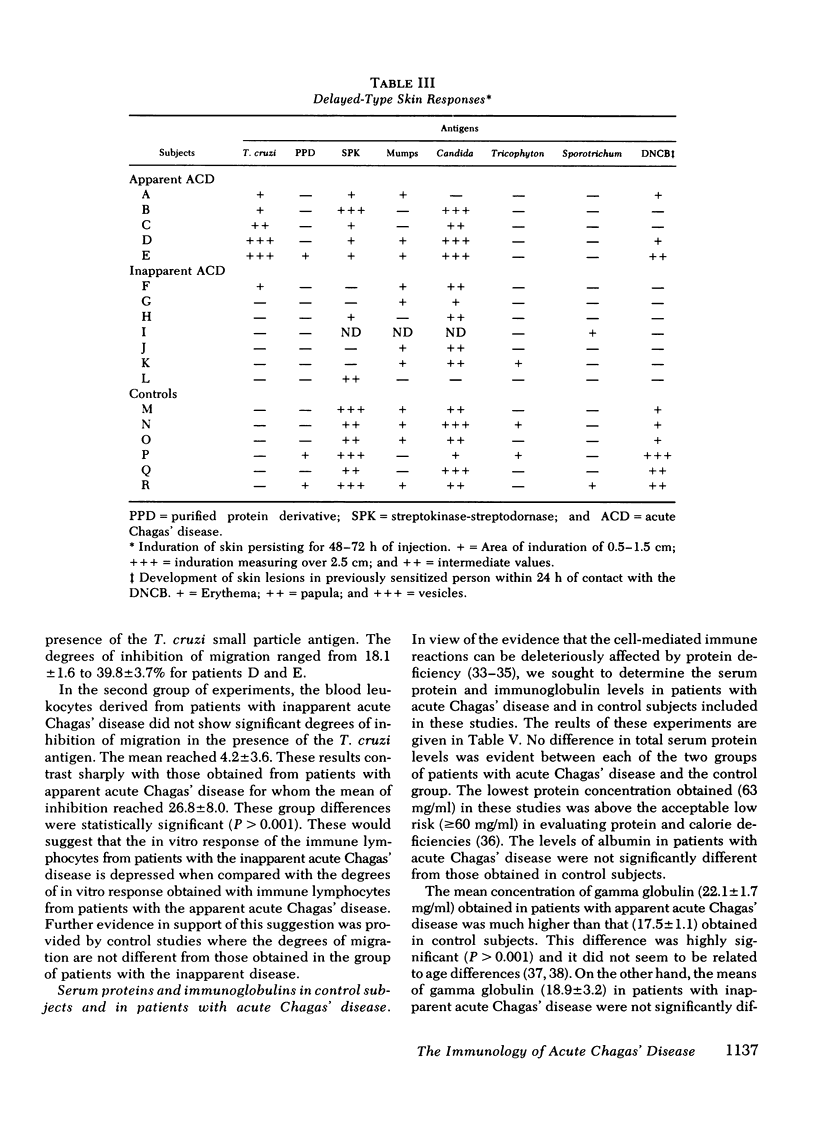
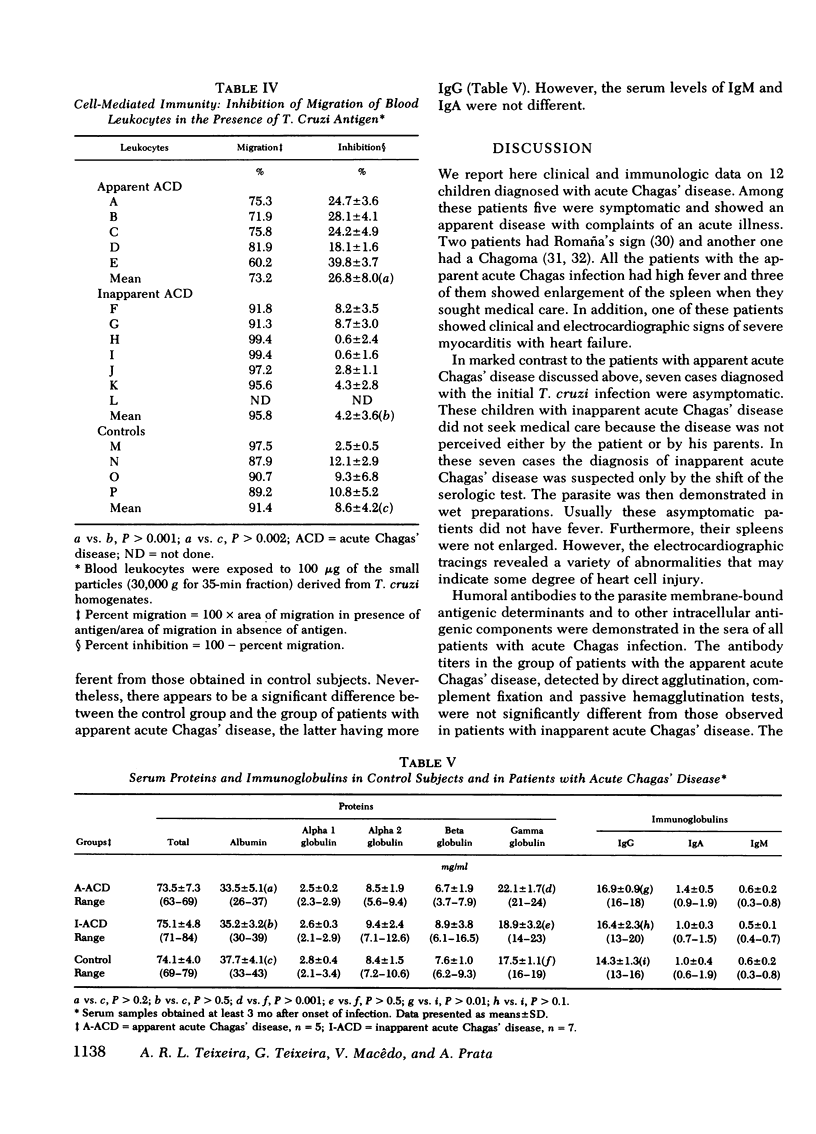
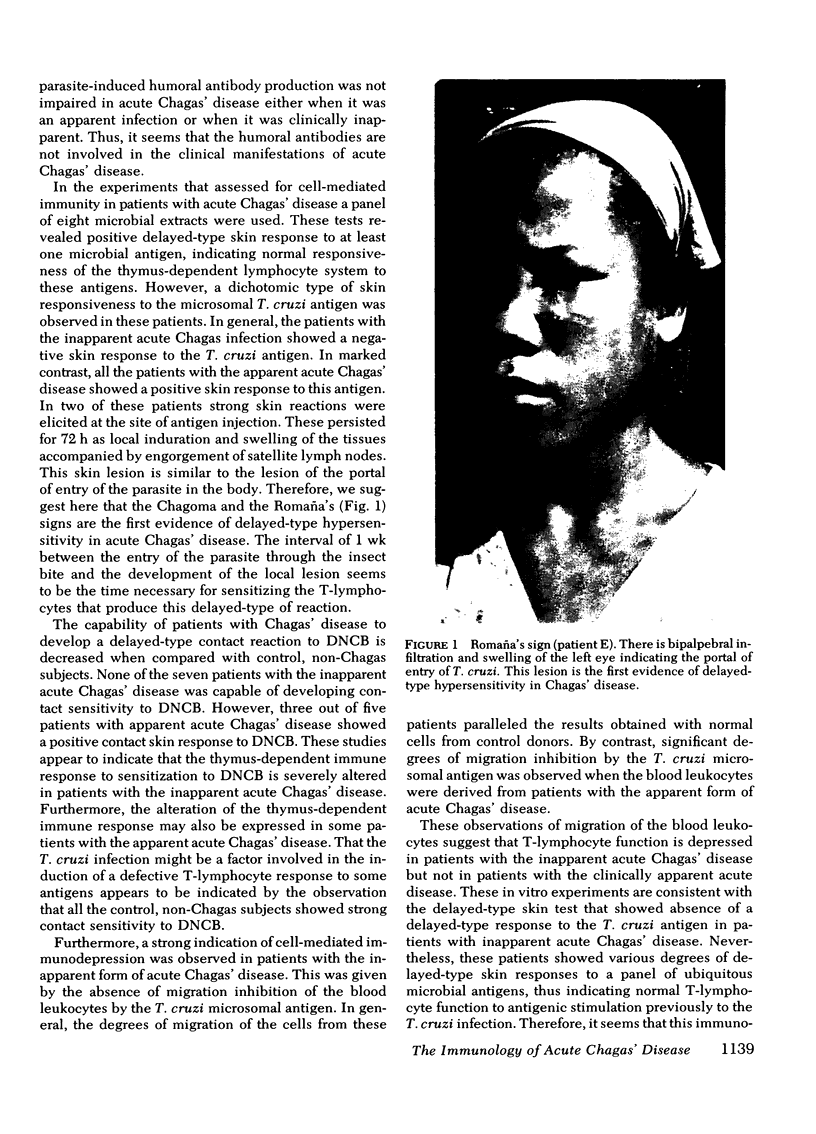


Images in this article
Selected References
These references are in PubMed. This may not be the complete list of references from this article.
- Bell R. G., Hazell L. A. Influence of dietary protein restriction on immune competence. I. Effect on the capacity of cells from various lymphoid organs to induce graft-vs.-host reactions. J Exp Med. 1975 Jan 1;141(1):127–137. doi: 10.1084/jem.141.1.127. [DOI] [PMC free article] [PubMed] [Google Scholar]
- CERISOLA J. A., FATALA CHABEN M., LAZZARI J. O. [Hemagglutination test for the diagnosis of Chagas' disease]. Prensa Med Argent. 1962 Aug 24;49:1761–1767. [PubMed] [Google Scholar]
- COHEN S., HANSEN J. D. Metabolism of albumin and gamma-globulin in kwashiorkor. Clin Sci. 1962 Oct;23:351–359. [PubMed] [Google Scholar]
- DE LUCENA D. T. Subsídios para o estudo epidemiológico da doença de Chagas no Nordeste. Rev Bras Malariol Doencas Trop. 1952 Apr;4(2):171–175. [PubMed] [Google Scholar]
- DIAS E., LARANJA F. S., MIRANDA A., NOBREGA G. Chagas' disease; a clinical, epidemiologic, and pathologic study. Circulation. 1956 Dec;14(6):1035–1060. doi: 10.1161/01.cir.14.6.1035. [DOI] [PubMed] [Google Scholar]
- Eardley D. D., Jayawardena A. N. Suppressor cells in mice infected with Trypanosoma brucei. J Immunol. 1977 Sep;119(3):1029–1033. [PubMed] [Google Scholar]
- Marsden P. D., Seah S. K., Mott K. E., Prata A., Platt H. Immunoglobulins in Chagas' disease. J Trop Med Hyg. 1970 Jul;73(7):157–161. [PubMed] [Google Scholar]
- Moore E. C., Meuwissen H. J. Immunologic deficiency disease. Approach to diagnosis. N Y State J Med. 1973 Oct 15;73(20):2437–2445. [PubMed] [Google Scholar]
- Santos-Buch C. A., Teixeira A. R. The immunology of experimental Chagas' disease. 3. Rejection of allogeneic heart cells in vitro. J Exp Med. 1974 Jul 1;140(1):38–53. doi: 10.1084/jem.140.1.38. [DOI] [PMC free article] [PubMed] [Google Scholar]
- Teixeira A. R., Santos-Buch C. A. The immunology of experimental Chagas' disease. I. Preparation of Trypanosoma cruzi antigens and humoral antibody response to there antigens. J Immunol. 1974 Sep;113(3):859–869. [PubMed] [Google Scholar]
- Teixeira A. R., Santos-Buch C. A. The immunology of experimental Chagas' disease. II. Delayed hypersensitivity to Trypanosoma cruzi antigens. Immunology. 1975 Mar;28(3):401–410. [PMC free article] [PubMed] [Google Scholar]



